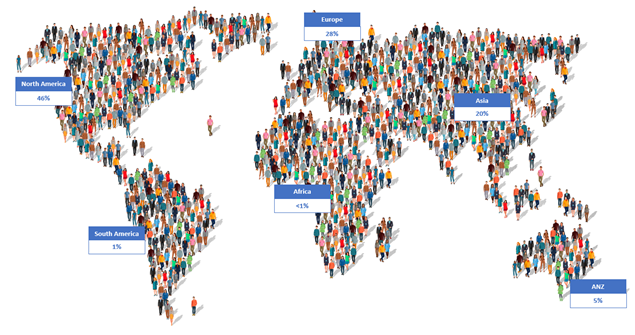Over the past year, collective discomfort with embedded biases, barriers, inequities, and disparities inspired research and publishing organizations to introduce a wealth of diversity, equity, and inclusion (DEI) initiatives. As a community, we often discuss Open Access (OA) and DEI separately. However, at AIPP, we see them as being connected concepts that underlie how we approach, process, and evaluate information. As we take stock of the many programs growing strategically throughout our organization, we coalesce around two principles: 1) openness is integral to inclusivity and collaboration in science and scholarship; and 2) DEI does not exist in a vacuum and cannot be advanced separately.
We aligned our program objectives with our organizational values and priorities:
- Scholarly research and the communications ecosystem should be equitable, fair, and inclusive. Who we are and what we do should reflect the diversity of the global communities we serve.
- We hold ourselves accountable and succeed through teamwork. We value collaboration, embrace external partnerships, and actively engage with the research community to further our shared purpose.
- Action- and outcome-oriented, we use data and intelligence to inform priorities, act with decisiveness and intention, and test, evaluate, and iterate for learning and growth.
The strategy we developed relies on transparency, accountability, and collaboration to commit to and operationalize a cultural shift to create more equitable workplaces, amplify diverse voices, and broaden access to publishing. We have begun to expand programs, engage in external collaborations, and formalize organizational accountability. These first steps may seem small compared to what lies ahead, but they lay a strong foundation to build on.
Many hands make light work
AIP Publishing has embarked on a huge project to collect race/ethnicity and gender data and assess the current demographic composition of our author, reviewer, and editorial boards, as well as those of our publishing partner societies. To learn from and collaborate with a wide spectrum of organizations, we joined the Framework for Action, a coalition of 46 societies and publishers initially brought together by the Royal Society for Chemistry who are undertaking the same work.
Laying it on the line
We intend to use the data we collect (anonymized and presented only in aggregate to protect individual privacy) as a baseline to set goals that we can measure against on a regular basis. Because we believe that being transparent with the results — even if they don’t measure up —creates accountability, decreases bias, and drives change, AIP Publishing is making our demographic data public as we gather it. AIP Publishing joins a few others in our community in doing this – we hope it will encourage our partners, vendors, and other organizations to get on board.

This infographic shows the geographic location of our journal editors and editorial board members. While we gather comprehensive data, these limited results show room for progress to achieve our goals to reflect the global research community.
For a cultural shift to be lasting, it should come from the “inside-out.” AIP Publishing has an inclusive and progressive culture, but we still struggle with issues that are evident elsewhere. An internal survey we conducted earlier this year revealed characteristics we want to fix, for example, the ethnic composition of our workforce is overwhelmingly white (>69%). We have made progress in our leadership team – it has more women than men – but only one-fifth are people of color. As a small organization with low turnover, any lasting shift in company demographics will take time to implement. But there are many things we can do to make incremental progress, such as revamping our recruitment practices, investing in individuals through coaching, training, competitive compensation, and addressing flexibility needs – all of which are being examined as part of the DEI initiative.
It’s all connected
These important steps reflect AIP Publishing’s lasting commitment to progress that improves and transforms the future for physical scientists, staff, and society. It goes hand in hand with the work we are doing to open access to research in a sustainable way, to ensure the permanence, discoverability, and reuse of published work. The convergence of the OA and DEI trajectories presents a unique opportunity to transform the research enterprise and society at large.
This intersectionality is at the heart of this year’s International Open Access Week (#OAWeek), “It Matters How We Open Knowledge: Building Structural Equity.” The 2021 #OAWeek theme is closely tied to the UNESCO Recommendations on Open Science, and calls for stakeholders to share insights and strategies for prioritizing DEI in tandem with Open Science “…from how our infrastructure is built to how we organize community discussions to the governance structures we use… to catalyze new conversations, create connections across and between communities that can facilitate this co-design, and advance progress to build more equitable foundations for opening knowledge – discussions and actions that need to be continued, year-in and year-out.”
AIP Publishing is pleased to respond to the #OAWeek call with our story. We encourage other organizations to embrace transparency, accountability, and collaboration as a strategy for managing DEI in the evolving open landscape, and welcome questions and conversations.
